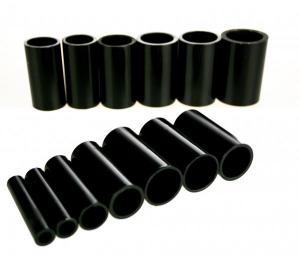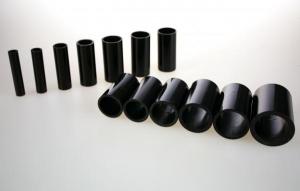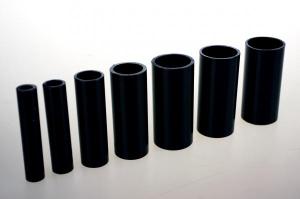Seamless Steel Tubes For Elevated Temperatures
- Loading Port:
- China Main Port
- Payment Terms:
- TT or LC
- Min Order Qty:
- 20MT m.t.
- Supply Capability:
- 5000 Tons Per Month m.t./month
OKorder Service Pledge
OKorder Financial Service
You Might Also Like
Specifications of Seamless Steel Tubes for Elevated Temperatures:
Standard:
DIN17175: Seamless Steel Tubes for Elevated Temperatures.
EN 10216-2: Seamless steel tubes for pressure purposes - Technical delivery conditions - Part 2: Non-alloy and alloy steel tubes with specified elevated temperature properties.
Size (mm):
Outer Dimensions: 3.0mm ~ 114.0mm
Wall Thickness: 0.5mm ~ 10 mm
Length: max 13000mm
Steel grade: DIN17175(St35.8, St45.8, 15Mo3, 13CrMo44, 10CrMo910), EN10216-2(P195GH, P235GH, P265GH, 13CrMo4-5, 10CrMo9-10).
Packing: Bare/bundles/crates/crate protection at the both sides of tubes or as per customers' requirements .
Painting: as requested.
DIN17175:Chemical Compositions(%)
Grade | C | Si | Mn | P | S | Cr | Mo |
St35.8 | ≤0.17 | 0.10-0.35 | 0.40-0.80 | ≤0.040 | ≤0.040 | / | / |
St45.8 | ≤0.21 | 0.10-0.35 | 0.40-1.20 | ≤0.040 | ≤0.040 | / | / |
15Mo3 | 0.12-0.20 | 0.10-0.35 | 0.40-0.80 | ≤0.035 | ≤0.035 | / | 0.25-0.35 |
13CrMo44 | 0.10-0.18 | 0.10-0.35 | 0.40-0.70 | ≤0.035 | ≤0.035 | 0.70-1.10 | 0.46-0.65 |
10CrMo910 | 0.08-0.15 | ≤0.50 | 0.40-0.70 | ≤0.035 | ≤0.035 | 0.20-0.25 | 0.90-1.20 |
DIN17175: Mechanical Properties
Grade | Yield Strength (Mpa) | Tensile Strength (Mpa) | Elongation(%) |
St35.8 | ≥235 | 360-480 | 25 |
St45.8 | ≥255 | 410-530 | 21 |
15Mo3 | ≥275 | 450-600 | 20 |
13CrMo44 | ≥290 | 440-590 | 20 |
10CrMo910 | ≥280 | 450-600 | 18 |
EN10216-2: Chemical Compositions(%)
Grade | C ≤ | Si ≤ | Mn ≤ | P ≤ | S ≤ | Cr ≤ | Mo ≤ | Cu ≤ | Ni ≤ |
P195GH | 0.13 | 0.35 | 0.70 | 0.025 | 0.020 | 0.030 | 0.08 | 0.30 | 0.30 |
P235GH | 0.16 | 0.35 | 1.20 | 0.025 | 0.020 | 0.030 | 0.08 | 0.30 | 0.30 |
P265GH | 0.20 | 0.40 | 1.40 | 0.025 | 0.020 | 0.030 | 0.08 | 0.30 | 0.30 |
13CrMo4-5 | 0.10-0.17 | 0.35 | 0.40-0.70 | 0.025 | 0.020 | 0.70-1.15 | 0.4-0.6 | 0.30 | 0.30 |
10CrMo9-10 | 0.08-0.14 | 0.50 | 0.30-0.70 | 0.025 | 0.020 | 2.00-2.50 | 0.9-1.1 | 0.30 | 0.30 |
EN10216-2: Mechanical Properties
Grade | Yield Strength (Mpa) | Tensile Strength (Mpa) | Elongation(%) | Elongation (%) |
P195GH | ≥195 | 320-440 | 27 | 25 |
P235GH | ≥235 | 360-500 | 25 | 23 |
P265GH | ≥265 | 410-570 | 23 | 21 |
13CrMo4-5 | ≥290 | 440-590 | 22 | 20 |
10CrMo9-10 | ≥280 | 480-630 | 22 | 20 |
Usage/Applications:
It is used for the pipelines of boiler industry.
Packaging & Delivery:
Each bundles pipes will be bundled with 6-8 pcs steel strips and with shipping marks and 2 nylon strips
40-50 days delivery on china port upon receiving original LC or prepayment.
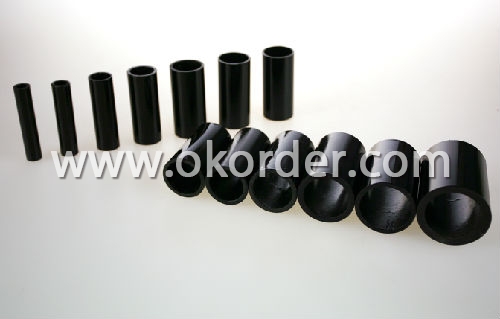
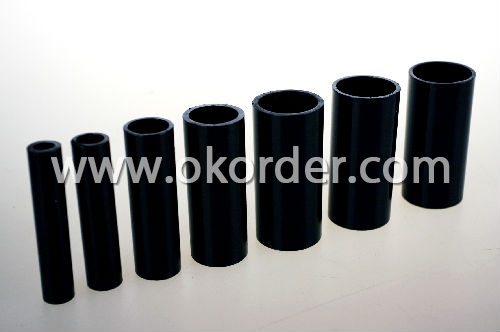
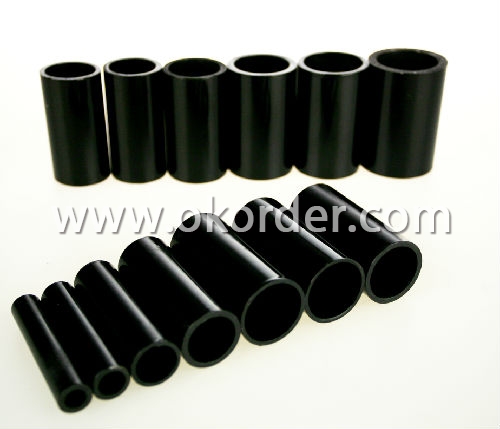
- Q:Are steel pipes fire resistant?
- Indeed, steel pipes possess fire-resistant properties. Steel, being a non-combustible substance, does not ignite or aid in the propagation of flames. Moreover, steel pipes exhibit a remarkable resistance to high temperatures, allowing them to endure extreme conditions. Consequently, they are ideal for situations demanding fire resistance. Furthermore, steel is a resilient material that maintains its structural integrity and does not deteriorate when subjected to fire. Consequently, steel pipes are frequently selected for fire protection systems, including building sprinkler systems, as well as for industrial purposes when confronted with fire risks.
- Q:What are the disadvantages of using steel pipes?
- One major disadvantage of using steel pipes is their susceptibility to corrosion. Over time, exposure to moisture and certain chemicals can cause the pipes to rust and weaken, leading to leaks or structural damage. Additionally, steel pipes are generally heavier and more expensive than alternative materials, making them less suitable for certain applications where weight and cost are crucial factors.
- Q:What are the different methods of bending steel pipes?
- There are several methods of bending steel pipes, including hot bending, cold bending, mandrel bending, rotary draw bending, and induction bending.
- Q:What quota is reserved for buried DN20 steel pipe?
- It is an embedded sleeve control sub item, if the reserved hole, then there is no need to cover, special subject structure adjustment factor of the cost of the water supply and drainage engineering, water supply and drainage engineering he is buried under the charge.
- Q:What are the advantages of using steel pipes?
- There are several advantages of using steel pipes. Firstly, steel pipes are extremely durable and have a long lifespan, making them a cost-effective choice for various applications. Secondly, steel pipes have high resistance to corrosion, making them suitable for use in harsh environments and underground applications. Thirdly, steel pipes have high strength and can withstand heavy loads, making them ideal for transporting fluids and gases under high pressure. Additionally, steel pipes are versatile and can be easily welded, threaded, or bent to fit specific requirements. Lastly, steel pipes are recyclable, making them an environmentally friendly choice.
- Q:How are steel pipes used in the transportation of liquids and gases?
- Steel pipes are widely used in the transportation of liquids and gases due to their durability, strength, and resistance to corrosion. They are commonly employed in various industries such as oil and gas, water supply, and chemical processing. In the transportation of liquids, steel pipes are used to convey crude oil, refined petroleum products, water, and other fluids. These pipes are designed to withstand high pressure and maintain the integrity of the liquid being transported. The smooth inner surface of steel pipes minimizes friction, allowing for efficient flow and reduced energy consumption. Additionally, the strength of steel pipes ensures that they can withstand the weight of the liquid being transported without deformation or failure. When it comes to gas transportation, steel pipes are crucial for their ability to safely transport natural gas, propane, and other compressed gases over long distances. These pipes are engineered to withstand high pressures and extreme temperatures. They are also designed to prevent leakage, which is of utmost importance when dealing with flammable or toxic gases. The strength and durability of steel pipes make them ideal for withstanding the stress and strain that may occur during the transportation of gases. Furthermore, steel pipes are often used in the construction of pipelines for long-distance transportation of liquids and gases. These pipelines can span hundreds or even thousands of kilometers, and steel pipes are the preferred choice due to their high strength and long-term reliability. They can handle the weight of the pipe and the transported substance, as well as the external forces such as soil pressure and temperature fluctuations. In summary, steel pipes play a crucial role in the transportation of liquids and gases. Their durability, strength, and resistance to corrosion make them the preferred choice for conveying various substances over long distances. Whether it is for oil and gas, water supply, or chemical processing, steel pipes ensure the safe and efficient transportation of fluids and gases, contributing to the functioning of various industries and economies worldwide.
- Q:How are steel pipes recycled at the end of their life cycle?
- Steel pipes are typically recycled at the end of their life cycle by first being collected and sorted at recycling facilities. They are then cleaned and processed to remove any contaminants. The pipes are further broken down into smaller pieces and melted in a furnace. Once the molten steel is formed, it can be used to create new steel products, such as pipes or other construction materials. This recycling process helps reduce the demand for new steel production and conserves valuable resources.
- Q:When can I use the PVC pipe and when to use the galvanized pipe?
- Galvanized pipes are generally used outside the drying environment or building blocks, and PVC is mainly used for pre embedding in walls or humid environments. If in the ceiling ceiling, below the roof, you need to use galvanized pipe, in the floor below, on the ground you need to use PVC.
- Q:How much is 4 inches steel tube MM?
- 1 inches =25.4 mm;4 inches =101.6 mm;The specification of steel pipe is usually nominal size;
- Q:What are the different methods of pipe inspection for steel pipes?
- Steel pipes can be inspected using various methods. Here are some commonly employed techniques: 1. Visual Inspection: Trained inspectors visually examine both the exterior and interior of the pipe to detect any visible defects or abnormalities. This preliminary method is often used before more advanced techniques are applied. 2. Magnetic Particle Inspection (MPI): By applying a magnetic field to the steel pipe and iron particles to its surface, inspectors can identify surface cracks or defects. Leakage of magnetic flux caused by these abnormalities can be detected with this method, which is particularly effective for ferromagnetic materials. 3. Ultrasonic Testing (UT): UT is a non-destructive testing method that utilizes high-frequency sound waves to identify internal defects or anomalies in steel pipes. A transducer sends ultrasonic waves into the pipe, and reflections or echoes of the sound waves are analyzed to determine the presence of defects, such as corrosion, cracks, or variations in wall thickness. 4. Radiographic Testing (RT): This method involves using X-rays or gamma rays to create an image of the internal structure of the steel pipe. The resulting image reveals any defects, such as cracks, corrosion, or weld discontinuities. RT is commonly used for inspecting welded joints. 5. Eddy Current Testing (ECT): ECT is a non-destructive testing technique that utilizes electromagnetic induction to detect surface and near-surface defects in steel pipes. By passing a coil carrying an alternating current over the pipe's surface, any changes in electrical conductivity or magnetic field caused by defects are detected and analyzed. 6. Acoustic Emission Testing (AET): AET involves detecting and analyzing high-frequency acoustic signals emitted by materials undergoing deformation or damage. In the case of steel pipes, AET can monitor and identify defects like cracks, leaks, or corrosion by analyzing the acoustic signals emitted during service or under stress. These methods are just a few examples of commonly used techniques for inspecting steel pipes. The choice of method depends on factors such as the type of defect being sought, accessibility of the pipe, desired sensitivity level, and cost and time constraints. Using a combination of inspection techniques is often recommended to ensure a thorough assessment of steel pipes.
1. Manufacturer Overview |
|
|---|---|
| Location | Wuxi, China |
| Year Established | 1991 |
| Annual Output Value | 300,000Tons |
| Main Markets | Europe; Southeast Asia; etc. |
| Company Certifications | API 5L;API 5CT;API Q1;ISO/TS29001 |
2. Manufacturer Certificates |
|
|---|---|
| a) Certification Name | |
| Range | |
| Reference | |
| Validity Period | |
3. Manufacturer Capability |
|
|---|---|
| a)Trade Capacity | |
| Nearest Port | Wuxi; Shanghai |
| Export Percentage | 41% - 50% |
| No.of Employees in Trade Department | 3900-4000 People |
| Language Spoken: | English; Chinese; Spanish |
| b)Factory Information | |
| Factory Size: | Above 450,000 square meters |
| No. of Production Lines | Above 10 |
| Contract Manufacturing | OEM Service Offered;Design Service Offered |
| Product Price Range | Average |
Send your message to us
Seamless Steel Tubes For Elevated Temperatures
- Loading Port:
- China Main Port
- Payment Terms:
- TT or LC
- Min Order Qty:
- 20MT m.t.
- Supply Capability:
- 5000 Tons Per Month m.t./month
OKorder Service Pledge
OKorder Financial Service
Similar products
New products
Hot products
Hot Searches
Related keywords
